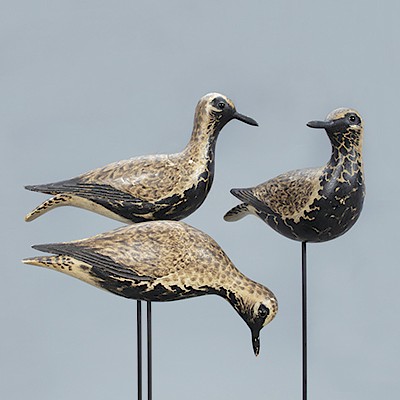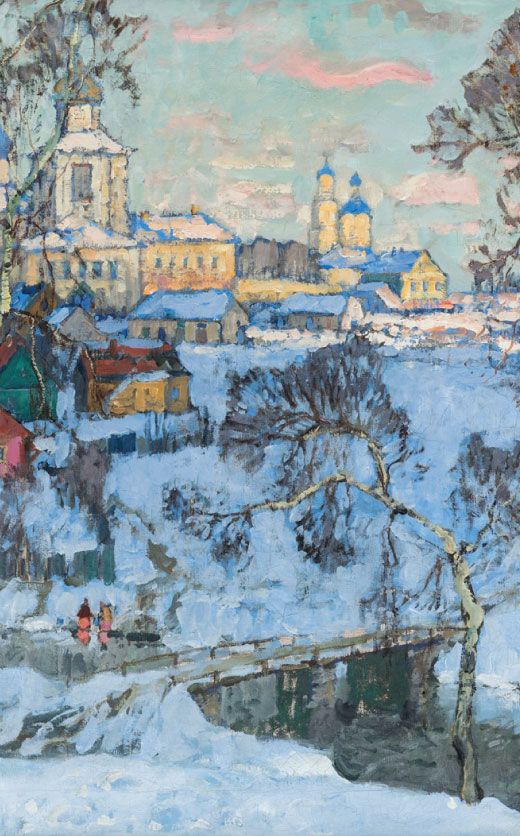The Holly Hollow Mallard Decoy, James T. Holly (1855-1935)
Lot 184
About Seller
Copley Fine Art Auctions
20 Winter Street
Pembroke, MA 02359
United States
Founded in 2005, Copley Fine Art Auctions is a boutique auction house specializing in antique decoys and American, sporting, and wildlife paintings. Over the course of the last two decades, the firm has set auction records for not only individual decoy makers, but also entire carving regions. Copley...Read more
Estimate:
$5,000 - $8,000
Absentee vs Live bid
Two ways to bid:
- Leave a max absentee bid and the platform will bid on your behalf up to your maximum bid during the live auction.
- Bid live during the auction and your bids will be submitted real-time to the auctioneer.
Bid Increments
| Price | Bid Increment |
|---|---|
| $0 | $50 |
| $1,000 | $100 |
| $2,500 | $250 |
| $5,000 | $500 |
| $10,000 | $1,000 |
| $25,000 | $2,500 |
| $50,000 | $5,000 |
About Auction
By Copley Fine Art Auctions
Jul 25, 2019
Set Reminder
2019-07-25 10:00:00
2019-07-25 10:00:00
America/New_York
Bidsquare
Bidsquare : The Sporting Sale 2019
https://www.bidsquare.com/auctions/copley/the-sporting-sale-2019-4227
July 25 at 10 am | 550 lots Copley Fine Art Auctions cinnie@copleyart.com
July 25 at 10 am | 550 lots Copley Fine Art Auctions cinnie@copleyart.com
- Lot Description
James T. Holly (1855-1935)
Havre de Grace, MD, c. 1890
17 1/2 in. long
Regarding this exact decoy, C. John Sullivan, Upper Chesapeake Bay decoy and waterfowling authority, states the following, “The Holly family is best known as the originator of the Havre de Grace Style of decoy carving. When collectors consider Holly decoys, they focus on the smooth flowing lines of their finely sculpted bodies. Their style is synonymous with the thousands of decoys that come from the Havre de Grace side of the Susquehanna River Flats as they flow into the Chesapeake Bay.
“The most prolific and most artistic of the Holly family was James T. Holly (1855-1935). He built sinkboxes and bushwhack boats, painted duck shooting scenes and sailing vessels, and carved most species of waterfowl that frequented the Upper Chesapeake. His decoys exhibit the sleekest and raciest style of any of the carvers from this region.
“Of the several styles of mallards, this form epitomizes the best of Holly’s creations. It presents itself as one of the very few hollow-carved decoys from Holly’s workshop. The fact that it has retained its original paint adds to the appeal of this extremely rare James Holly creation." This singular example is believed to be the only hollow Holly mallard known to exist.
Original paint with gunning wear and a tight neck crack.
Provenance: Dr. Morton D. Kramer Collection
Literature: C. John Sullivan, “The Hollys of Havre de Grace,” Decoy Magazine, Jan/Feb 1992, pp. 8-13.
J. Evans McKinney, "Decoys of the Susquehanna Flats and Their Makers," Ocean City, MD, 1990, p. 52.Please email condition report requests to colin@copleyart.com. Any condition statement given is a courtesy to customers, Copley will not be held responsible for any errors or omissions. The absence of a condition statement does not imply that the lot is in perfect condition.Condition
- Shipping Info
-
Shipping info
Copley Fine Art Auctions does not handle the shipping of any items. Shipping is the sole responsibility of the buyer. Once your payment has cleared, and we have received your authorized shipping release form items may be released for shipment. Copley Fine Art Auctions, LLC shall have no liability for any loss or damage to such items. Buyers should allow up to four weeks for shipment.Please be aware that internet bidders may NOT not pick up their items at the sale. Items will be available for pick up by appointment or by shippers five days after the sale.
-



 EUR
EUR CAD
CAD AUD
AUD GBP
GBP MXN
MXN HKD
HKD CNY
CNY MYR
MYR SEK
SEK SGD
SGD CHF
CHF THB
THB















